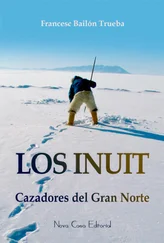Although the last shamans passed away in the late 1920s, taking with them the great shamanistic rituals, many traditional beliefs and practices have persisted while being intermixed with Christian beliefs and practices. The belief in the invisible world’s influence on human behaviour has even been strengthened with the rise of Christian fundamentalism in the Arctic.
The cultural context in which the first part of the manuscript was conceived and written was that of the early 1950s, when the Inuit of Kangirsujuaq spent winter in their igloos, in five or six camps, and spring and summer in their tents, in a dozen or so small hunting camps. This way of life was a false archaism, to borrow an expression from Lévi-Strauss, for it was an impoverished form of the life from before the coming of the Qallunaat. The combined effects of the Great Depression of the 1930s, the plummeting prices for Arctic fox pelts, and the Second World War had brought about the closing of the two trading posts that had operated there since 1914. The caribou, so important to the traditional economy, had gone, as had the umiat (large multi-passenger boats covered with sealskins) which were used to move families over long distances in summer and autumn. The few owners of Peterheads (wooden boats with a sail and motor) purchased when Arctic fox prices were at their height, had left the territory for other communities that still had trading posts.
In 1950, the Inuit of Kangirsujuaq received their first family allowance and old age pension cheques. In 1961, they had their first small prefab homes, their first school, and their first motor boats. Then came snowmobiles, electricity from generators, housing developments, and the sedentarization of families around establishments (missions, stores, schools, and nursing stations). What makes this novel interesting is that it covers the pre- and early transitional period, i.e., Mitiarjuk’s childhood from the early 1930s to the aftermath of the Second World War.
Characters
There are about thirty characters in the book, fifteen or so of whom play an active role. The active ones are those close to Sanaaq — the young widow at the centre of the story — and a few Qallunaat. In many ways, the heroine resembles the author, while differing from her in other ways. Like Mitiarjuk, she is responsible for a young sister and marries a young, inexperienced man who often has to seek advice from his older sister and her old husband. Like Mitiarjuk, Sanaaq has a strong will that impresses her husband. She is nonetheless tender toward her children and compassionate toward people in need. She is also capable of self-criticism when her emotions get the better of her reason.
The novel gives women major roles in all generations: Sanaaq’s old relative, Ningiukuluk — with her bad character — who is nonetheless loved and respected; Aqiarulaaq, Sanaaq’s friend, partner, and rather scatterbrained stepsister; Arnatuinnaq, the young, active, and sentimental sister; and Qumaq, the little daughter who single-mindedly does what she wants but thinks over her mistakes and tries to correct them. All of these female characters, through their weaknesses, set off Sanaaq’s rich personality.
Except for old Taqriasuk, the most elderly man in the camp, whose knowledge and advice are appreciated, the male characters appear to be lightweights. They try to perform their role of provider, while plagued by numerous blunders and gaffes (Irsutualuk is rejected by Sanaaq, who stands up to Qalingu, her husband), by tragedies (Jiimialuk’s death), by fears (panic of Maatiusi and Ilaijja), and by distress (possession of Maatiusi by a succubus after he suffers disappointment in love). The White men hardly fare any better with their rather futile religious quarrels, their maladjustment to the cold and to the North, and their loose relations with Inuit women (harassment of Arnatuinnaq by store employees).
In all this we have an original female viewpoint on Inuit life and psychology — too often described by men and by people from outside Inuit culture who have underestimated the contribution of women and ignored their viewpoint.
To conclude, I will say that Mitiarjuk always attached much importance to her language and its proper usage. Instead of getting by with a kind of pidgin English when seeking to be understood by Qallunaat, like many fellow Inuit, she always insisted on correcting mistakes and giving the exact term or the correct grammatical form. Sanaaq attests to this rigour, as well as to a lively imagination without limits. It will always be a reference book for coming generations of Aboriginal men and women. For non-Aboriginals, it will be an invaluable introduction to a culture that is so captivating and has changed so much.
On May 14, 2004, Mitiarjuk received her investiture as a Member of the Order of Canada from the Right Honourable Adrienne Clarkson, Governor General of Canada, with the following citation:
One of the most respected elders in Nunavik, Mitiarjuk Attasie Nappaaluk is committed to sharing her knowledge and to preserving the Inuit culture. As a young woman, she taught missionaries her language and, in return, she was taught to write syllabic script. Thus, her life as a writer and teacher began. Since then, she has authored twenty-two books that have served as teaching tools, has overseen teacher training and has helped develop a curriculum for the Kativik School Board. As well, she wrote Sanaaq, the first novel written in Inuktitut. Also involved in municipal and health issues, she is the recipient of a National Aboriginal Achievement Award.
She was now in poor health. Back in her community and surrounded by her beloved family, she passed away in May 2007, one year after I had last visited her.
Thanks go to two of my old friends: Peter Frost, PhD, my former student at Laval University, for his professional translation into English, and Christopher Trott, PhD, Warden and Vice-Chancellor, St. John’s College, University of Manitoba, for his enthusiastic efforts with the University of Manitoba Press and with Avataq Cultural Institute to promote this English edition and unique piece of Inuit literature. A thousand new pages were written in syllabics by Mitiarjuk at my request and are waiting to be published for the benefit of the Inuit people and the rest of the world. This should be an exciting challenge…
Bernard Saladin d’Anglure, CM, PhD
Professor emeritus
Centre interuniversitaire d’études et de recherches autochtones (CIÉRA) University Laval, Quebec City
1 Out of respect for the Inuit language and in keeping with the practice of the journal over the past forty years, I refer to one Inuit person as an “Inuk” and more than one as “Inuit.” The adjective “Inuit” is invariable, e.g., the Inuit language, the Inuit culture. All authors who speak the Inuit language use this form of writing.
2 Bernard Saladin d’Anglure, “Le ‘troisième sexe,’ ” July — August 1992, 836–844.
A woman, Sanaaq, was getting ready to go and gather branches for mat-making. This is what she did. Before leaving, she assembled a tumpline to carry the load, her ulu to cut the shrubs, and a glove to yank them out of the ground. She also filled a small bag with provisions: tea, meat, and blubber, as well as her pipe, matches, and chewing tobacco.
Sanaaq set off across a wide plain and then through a long stretch of foothills. She kept walking further and further from home, followed by her two dogs, Kajualuk and Qirniq. On the way she saw some aqiggiit and prepared to kill them with a few well-aimed stones. But the dogs ran after the birds. Sanaaq tried her best to stop the dogs, yelling at the top of her voice, “ Hau! Hau! Kajualuk hau! hau! ”
Читать дальше

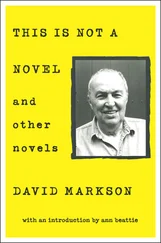
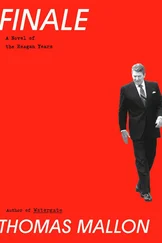
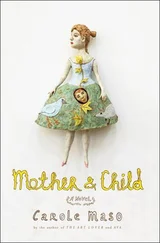
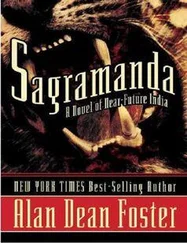


![Дональд Уэстлейк - Enough [A Travesty (novel) and Ordo (novelette)]](/books/416846/donald-uestlejk-enough-a-travesty-novel-and-or-thumb.webp)


